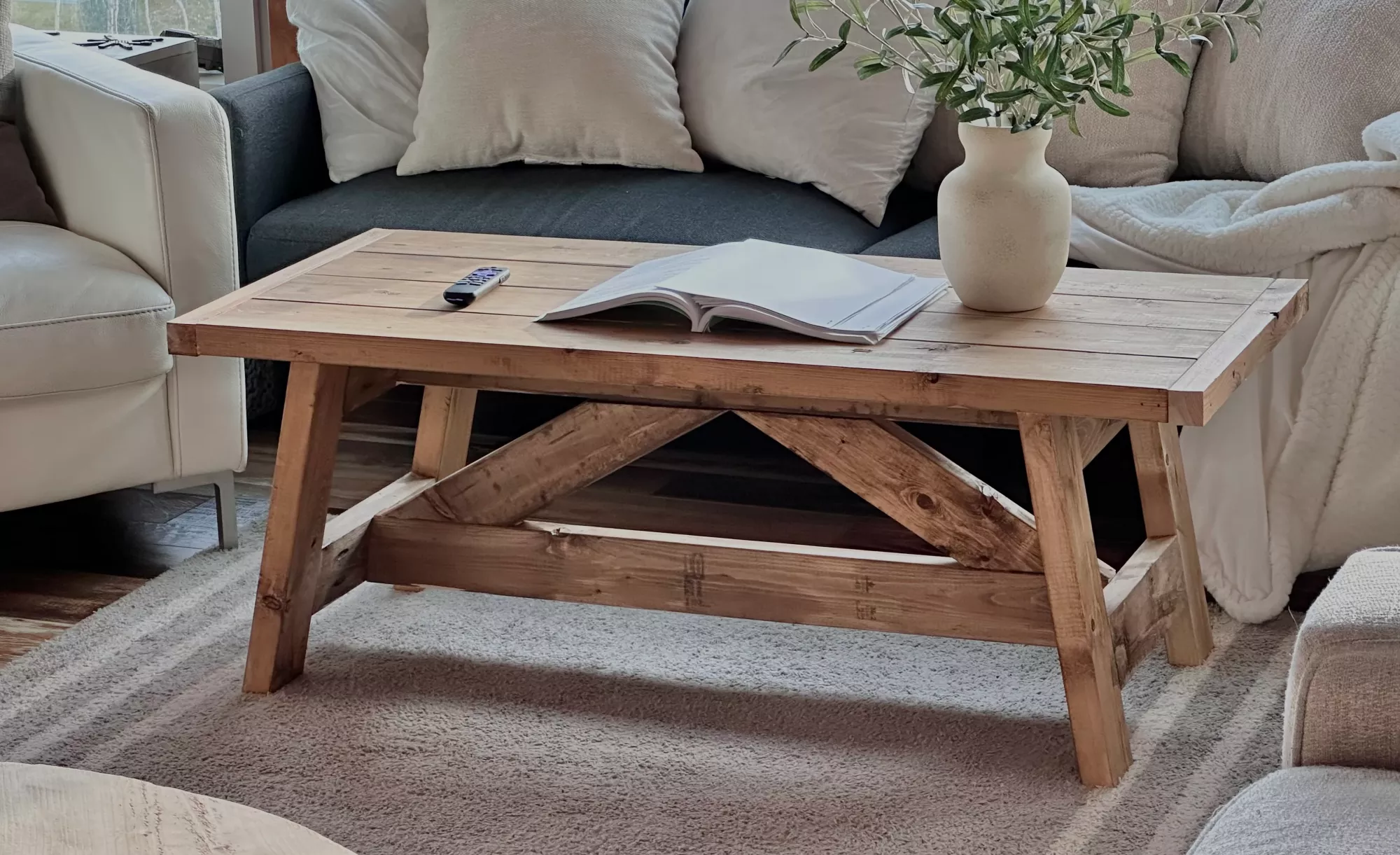
Free plans to build a truss style coffee table from ana-white.com
This coffee table features a solid wood design, so you can paint or stain it any color. It will add a rustic, authentic look to your space, and have the durability to put your feet up.
This free plan includes shopping and cut list, step by step diagrams and reader submitted photos.

Pin For Later!
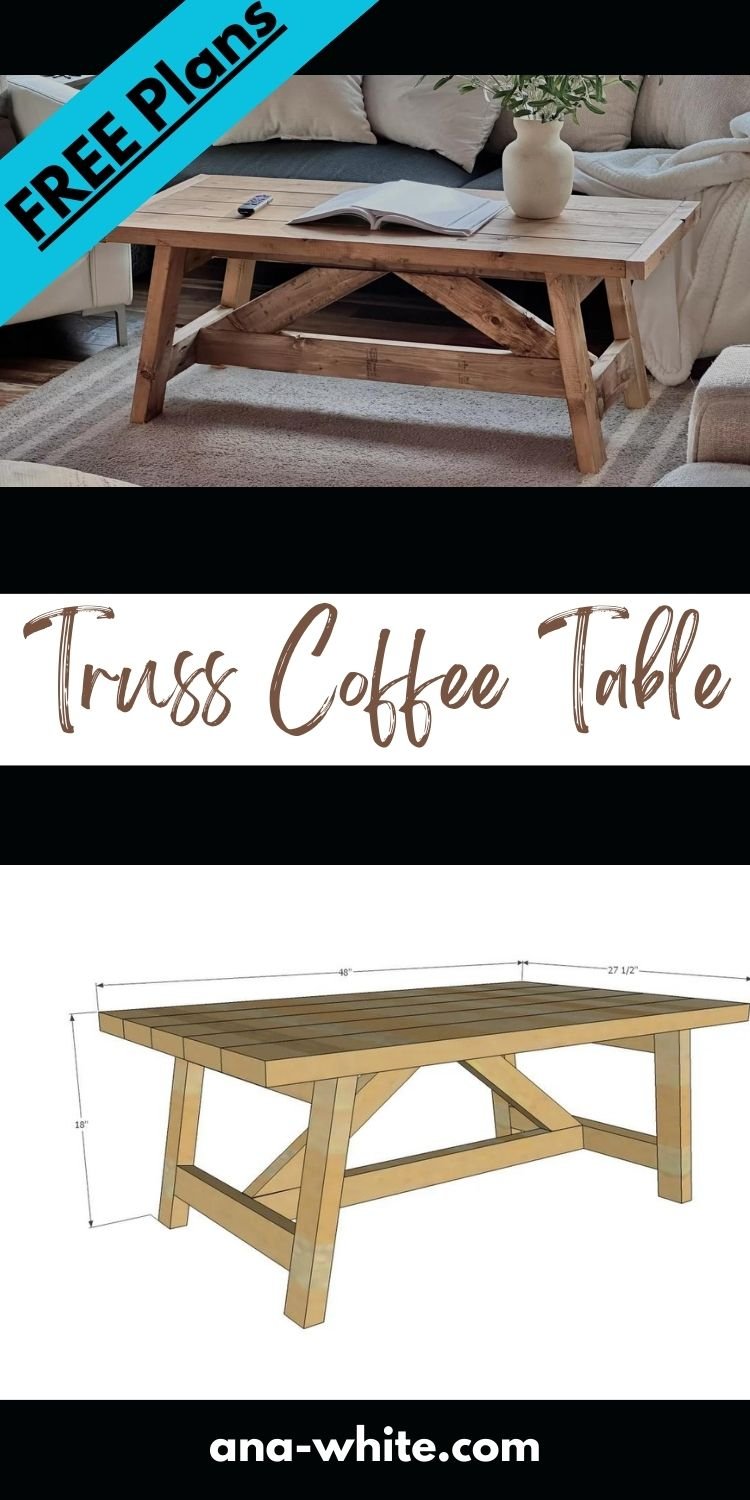
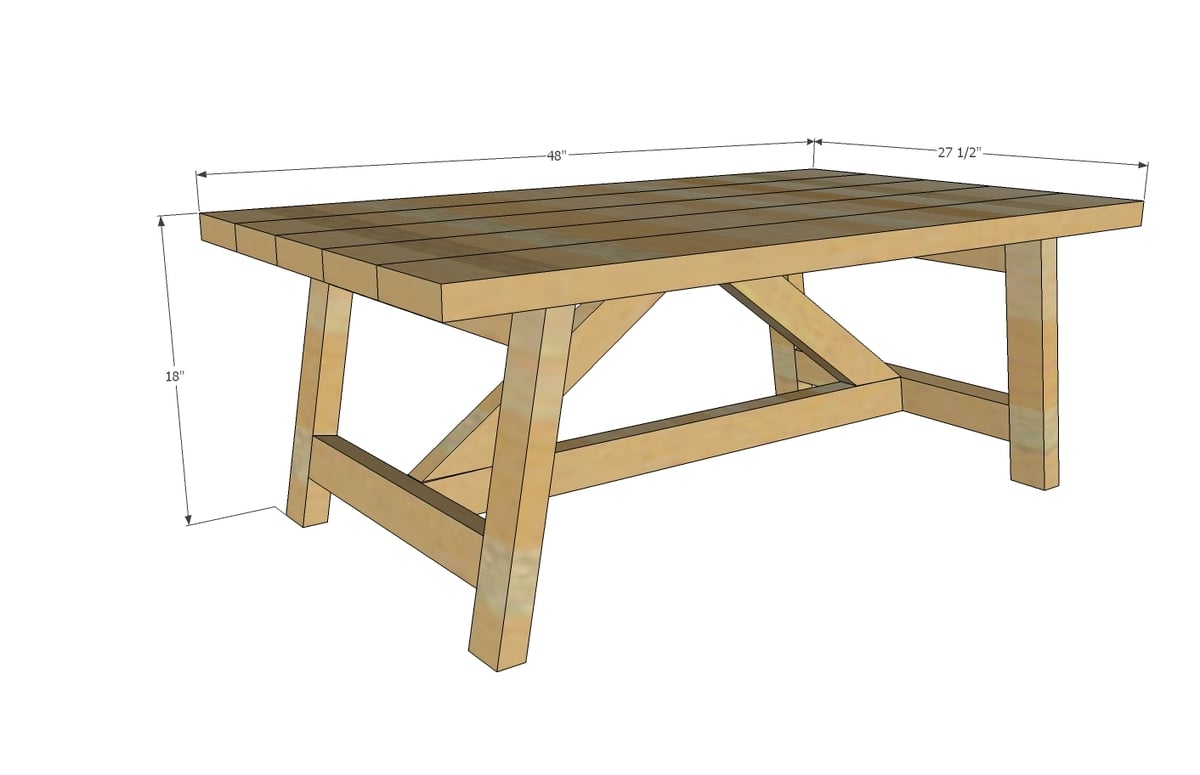
Preparation
- 3 - 2x6 @ 8 feet long
- 3 - 2x3 @ 8 feet long
- For attaching, you can use countersunk screws (3" wood screws) or 2 1/2" PH screws and glue.
NOTE: I did end up using 2x4s for the base build instead of 2x3s. This did change the end stretcher measurements to 17" instead of 19" and the cross bracing changed as well.
- 4 - 2x3 @ 16 3/4" (legs - both ends cut at 10 degrees off square BEVEL long point to short point, ends ARE parallel)
- 4 - 2x3 @ 19" (end stretchers)
- 1 - 2x3 @ 37 3/4" (bottom stretcher - both ends cut at 10 degrees off square ANGLE long point to long point ends are NOT parallel)
- 1 - 2x3 @ 33 3/4" (top stretcher - both ends cut at 10 degrees off square ANGLE long point to long point ends are NOT parallel)
- 2 - 2x3 @ 20" (truss detail - cut down to make up truss parts - if you saw cuts 55 degree angles, you can also cut these with ends parallel at 55 degrees off square, long point to short point, 15" long)
- 5 - 2x6 @ 48" (tabletop)
This is an advanced plan, do not tackle as a first project.
Make sure your tabletop is dry, flat and level, as if the tabletop warps, it could lift the leg(s), and cause the coffee table to not sit level.
If you have trouble with your coffee table sitting level, leveling feet on the legs can help.
Instructions
Step 1
First, build your two leg ends. They will be identical. You can use 1 1/2" pocket holes on each end of the aprons and 2 1/2" pocket hole screws to attach, or you can attach from outsides with screws and glue.
If you choose to countersink, first drill a hole the size of your screw head 1 1/2" into the leg. Then attach your screw, countersinking the head into the leg 1 1/2".
TIP: If you plan to attach the coffee table top to the base in later steps with pocket holes (see step 5) then drill 1 1/2" pocket holes facing upward on insides of top aprons.
Step 2
Step 3
Step 4
I recommend building tabletop first with 1 1/2" PHs and 2 1/2" PH screws, or edge gluing and clamping to create your tabletop.
In the photo, I cut the tabletop boards down to 45" and then added 2x2s on the ends for a more finished look, this is optional.
Attach the tabletop to the base with screws from the top or through pocket holes drilled in the inside of the aprons.
It is always recommended to apply a test coat on a hidden area or scrap piece to ensure color evenness and adhesion. Use primer or wood conditioner as needed.



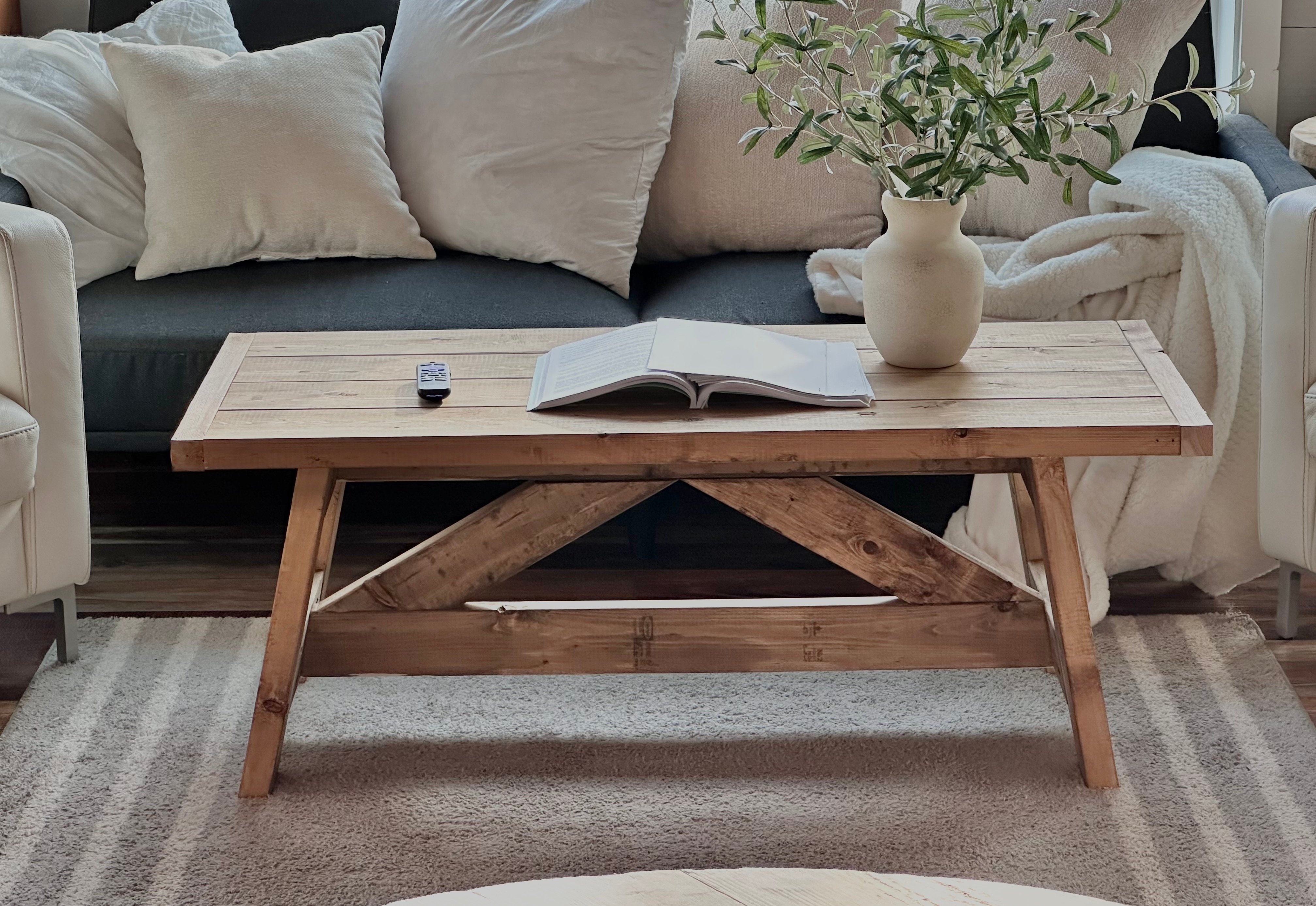

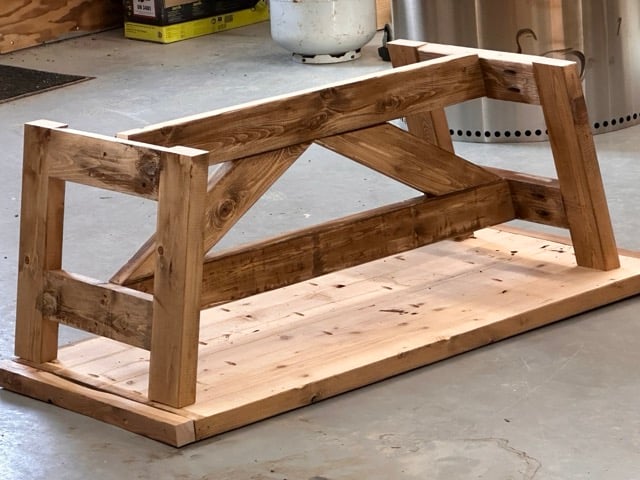
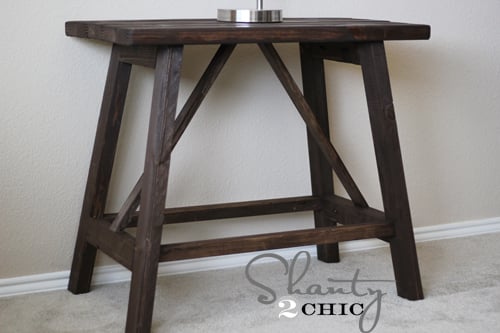
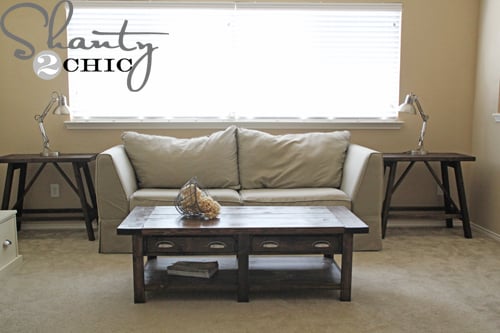










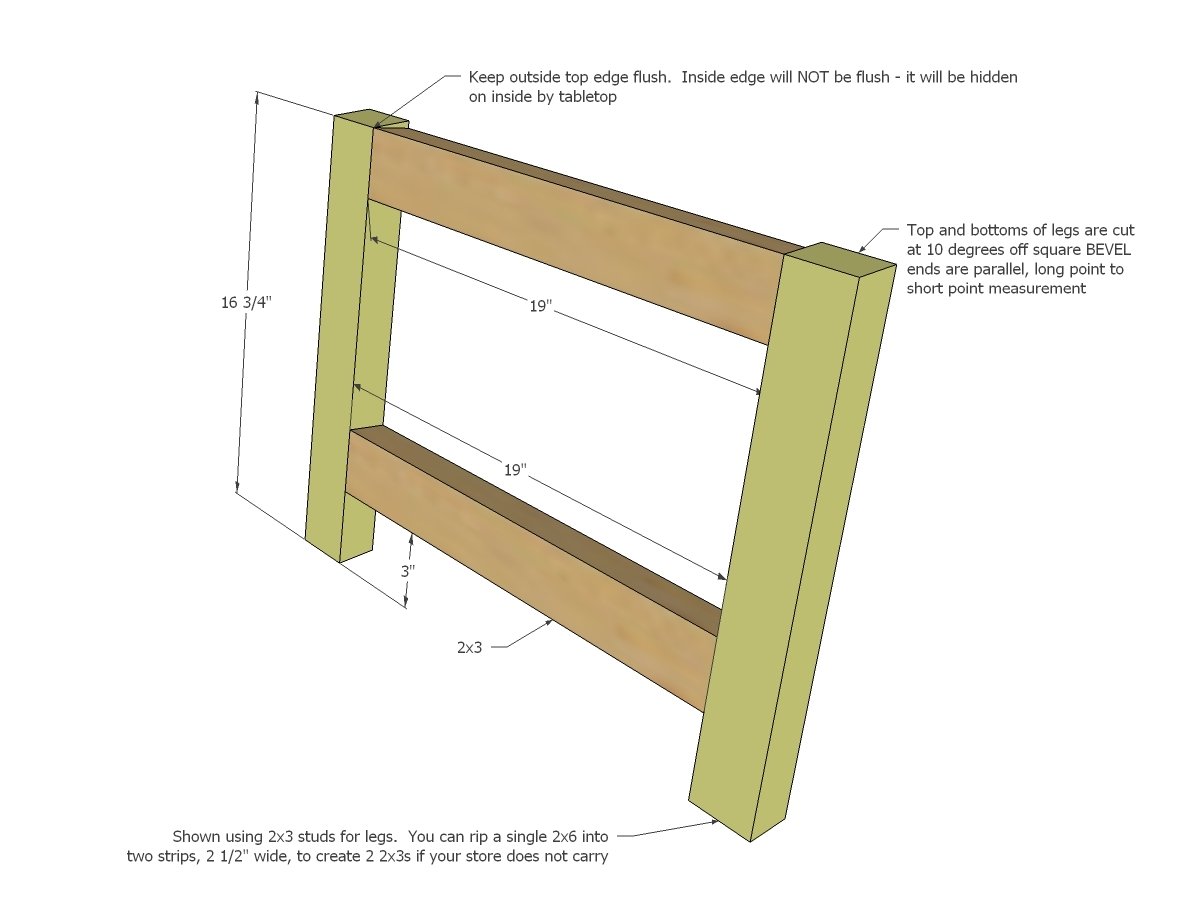






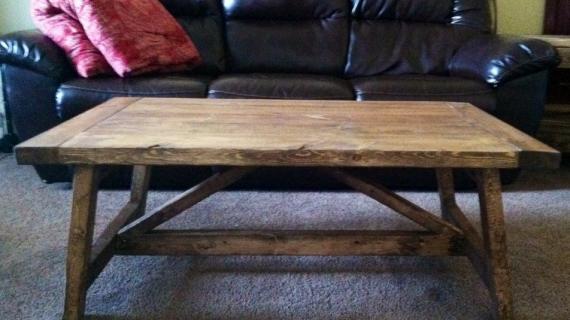

Comments
ealcorn
Thu, 02/18/2016 - 14:57
Substitute for Top?
I'm interested in building this coffee table and would like to use some wood harvested from my family farm for the top. It was originally cut to be used for flooring. There are 3", 4", and 5" wide pieces. The problem is these are 3/4"-1" thick, so they are more like 1X's than the 2X's called for. How can I modify this plan to use these boards without altering the overall aesthetic of the table? Thanks in advance for the suggestions!